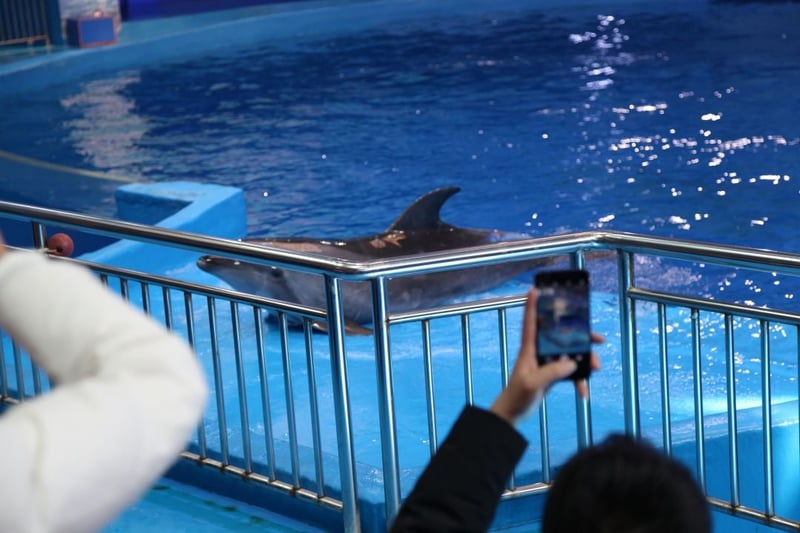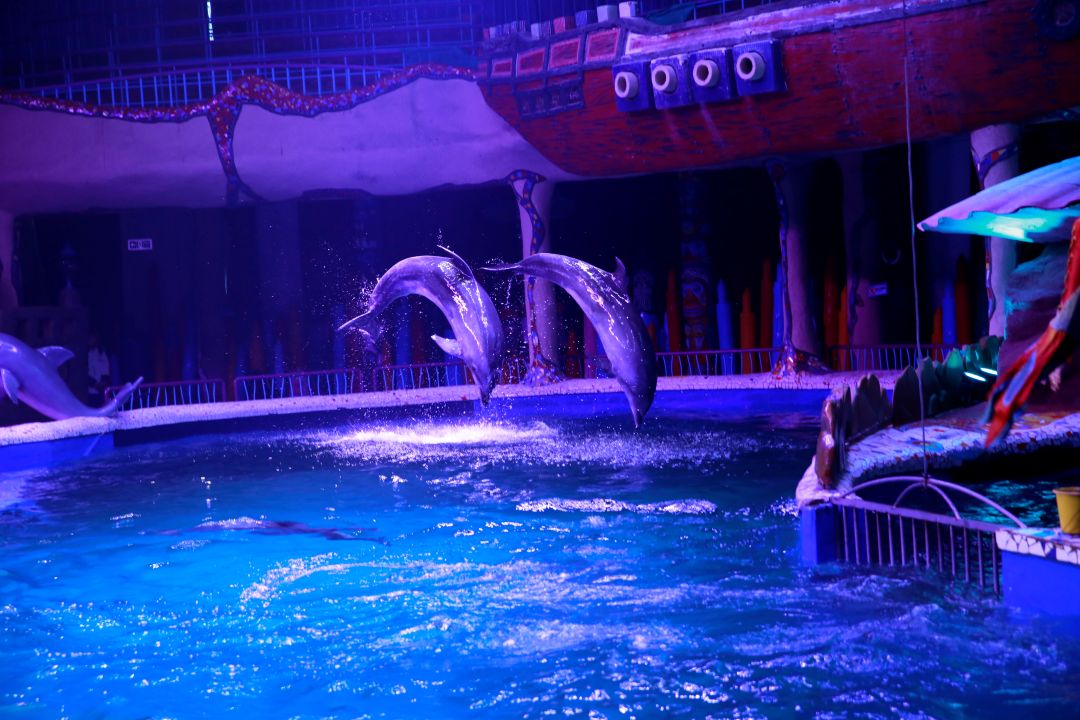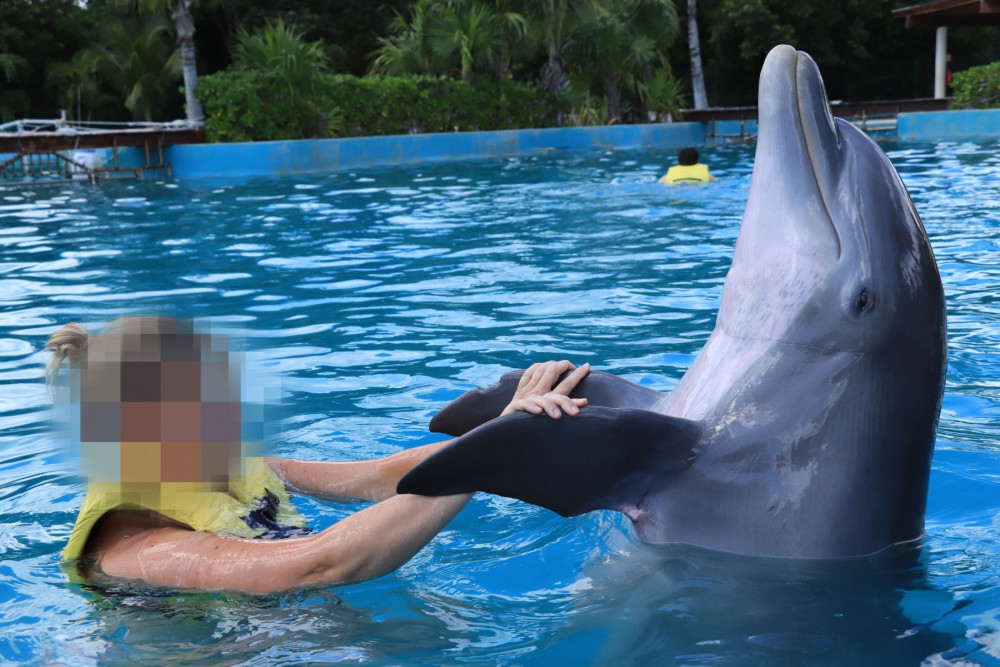
Working to end whale and dolphin captivity
Blog
Our research exposed the dark side of the dolphin entertainment industry. Now, we’re turning evidence into action for real change.
Films like Free Willy and Blackfish opened the public’s eyes to the suffering of whales and dolphins in captivity, sparking global outrage and inspiring real change – especially for orcas.
Back in March of 2019, World Animal Protection partnered with the Animal Welfare Institute to release the fourth edition of ‘The Case Against Marine Mammals in Captivity’ - a landmark report that dismantles the myths and misinformation surrounding the keeping of marine mammals in captivity.
Since 80% of all the cetaceans kept in captivity worldwide are dolphins, we felt it was critically important to understand the extent of their suffering.
In September 2019, we released ‘Behind the Smile - The multibillion-dollar dolphin entertainment industry’, the first comprehensive assessment of the global dolphin industry. Our research exposed the massive scale and profitability of this multi-billion-dollar entertainment industry and its links to the suffering of more than 3,000 dolphins.
Key findings:
- 3,603 cetaceans were identified in facilities around the world.
- Eight in 10 (3,029) were dolphins – 87% of them bottlenose dolphins.
- Over 60% of all captive dolphins worldwide are kept by just 5 countries: China (23%), Japan (16%), USA (13%), Mexico (8%) and Russia (5%).
Mexico and the Caribbean account for almost one in five captive dolphins globally. - 93% of dolphin venues worldwide offer shows with dolphins; 66% offered “swim with dolphins” experiences.
- Common tricks performed during the shows included dolphins pulling their trainers through the water by their fins, trainers ‘surfing’ on the dolphin’s back or being propelled out of the water by the dolphin’s snout.
- 66% of dolphins at 233 venues were kept in concrete tanks; 575 dolphins at 95 venues were kept in indoor tanks, never experiencing sunlight or fresh air.
- The average size of the largest primary tank is just 444 m² - which is 200,000 times smaller than their natural home range and only slightly larger than the average IMAX movie screen.
 Photo: World Animal Protection
Photo: World Animal Protection
These reports helped shape landmark change – influencing Canada’s ban on the keeping, breeding and trade of cetaceans for entertainment and motivating travel companies like Air Canada, Transat, WestJet, Sunwing to stop selling and promoting tickets to venues that keep cetaceans in captivity for entertainment.
As more countries follow Canada’s lead in phasing out this cruel industry, including France, Belgium, India, Hungary, Chile, Australia and Mexico - the need for humane, long-term solutions has become more urgent than ever.
Fortunately, following the development of a beluga sanctuary in Iceland and a rehabilitation and sanctuary facility for dolphins in Indonesia, more plans are underway to develop seaside sanctuaries for cetaceans from the entertainment industry in Canada, Puerto Rico, Greece and Italy. In Mexico, the government is working to relocate hundreds of captive dolphins from concrete tanks to sea pens – offering hope for a better life – while banning the breeding and import of dolphins and thus making this the last generations of captive dolphins in Mexico.
Here’s how we’re working to assist with these initiatives:
Canada
We’re urging the Ontario government to step in and provide emergency care for the 30 beluga whales, four dolphins and land animals remaining at Marineland in Niagara Falls which closed its doors in 2024. We’re also calling on officials to bring together experts and stakeholders to the table to determine the most humane solutions for the future care of these animals.
To help create lasting change, we have also provided funding to support the Whale Sanctuary Project to establish a 100-acre seaside sanctuary in Port Hilford Bay, Nova Scotia. The sanctuary could be home to up to 10 beluga whales. It would meet the highest standards of animal welfare established by the Global Federation of Animal Sanctuaries (GFAS).
We’re also urging the Ontario, Nova Scotia and Federal governments to work together to facilitate the transfer of whales from Marineland, Niagara Falls to the sanctuary when it is ready.
You can help by taking action for Marineland’s animals.
Europe
In Europe, we’re supporting advocacy efforts to find humane solutions for the animals remaining in captivity at European facilities, such as at Marineland Antibes. And we're collaborating with sanctuary partners on the ground through funding, technical expertise and guidance to accelerate the development of sanctuary facilities.
We’re also working closely with a wide network of NGOs and experts to ensure a unified front against the dolphin entertainment industry’s continued refusal to accept responsibility.
Mexico
In June 2025, Mexico passed amendments to its General Wildlife Law, dubbed “Mincho’s Law” and banned the wild capture, breeding and captivity of dolphins and other marine mammals for entertainment. This includes shows, dorsal fin riding and any activity not directly related to conservation or scientific research.
Now, Mexico’s Federal Attorney for Environmental Protection (PROFEPA) is assessing the health of the dolphins and the conditions of the facilities. They will then create and implement a protocol to relocate hundreds of captive dolphins to sea pens within the legally expected 18-month timeframe.
Mexico currently has around 30 dolphinaria and more than 350 dolphins in captivity. We are proud to support the Mexican government’s efforts by funding independent cetacean welfare and veterinary experts, as well as legal and communications support.
 A tourist holds a dolphin’s fins while she is photographed in Mexico (Photo: World Animal Protection).
A tourist holds a dolphin’s fins while she is photographed in Mexico (Photo: World Animal Protection).
A future without whale and dolphin captivity
The tide is turning. Around the world, more governments, organizations and people are standing up to say: whales and dolphins do not belong in tanks.
Together, we’re creating a future where these intelligent, social beings can finally live with dignity and freedom.
Banner photo: World Animal Protection